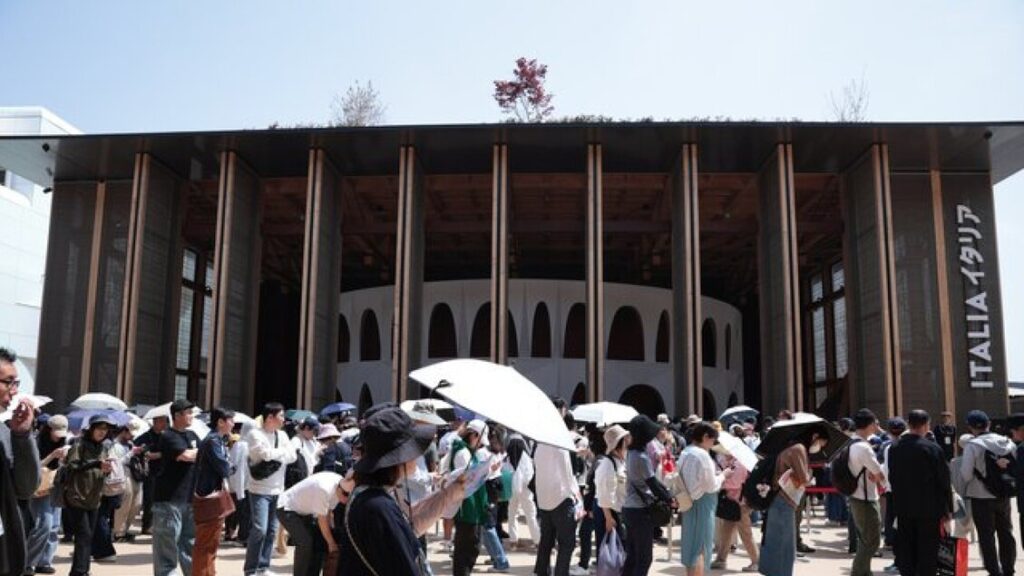One month after the opening of the
Italy Pavilion at Expo 2025 Osaka, a first assessment can be
made of the role it has played. Thanks to an agenda that was
able to give key relevance to local territories, the Italy
Pavilion has played its part as a strategic outpost and a tool
for the diplomacy of growth.
Italy’s regions and territories were the protagonists: 18 out of
20 regions in fact chose to take part in the project of Expo
2025 Osaka – an unprecedented number.
Over 80 institutional and cultural events were held in the first
month alone, involving more than 120 Italian and Japanese
companies, facilitating the signature of contracts and supplies
worth millions of euros.
One example, among others, concerns the Danieli group which
signed contracts for over 40 million euros.
In addition, during business meetings at the Italy Pavilion, the
Japanese company Ebara announced an agreement to invest over 6
million euros in Gambellara, in the province of Vicenza.
Another example worth mentioning is Kagome, an historic Japanese
leader in the agri-food market which produces in Calabria most
of the vegetables that it distributes in Japan.
Calabria is also a protagonist thanks to important investments
carried out by NTT Data, an historic Japanese company in the IT
sector.
The Italy Pavilion has provided the setting over the past month
for B2B meetings between Italian and Japanese companies, with
more than 30 meetings.
Thanks to the innovative synergy with the Business and Made in
Italy Ministry and state investment agency Invitalia, the Italy
Pavilion has hosted an event every week, one for each territory,
dedicated to foreign investments.
These included Selecting Italy, organized with the patronage of
the Conference of Regions and the northeastern Friuli Venezia
Giulia region, and initiatives to celebrate Made in Italy Day,
including one organized by the foundation Altagamma in
cooperation with Confartigianato.
The economy has been at the centre of events, in a privileged
location to revamp Italy’s image in Asia – also from a business
standpoint.
The aerospace and underwater sectors are moreover important for
the Italy Pavilion with a significant role played, in this
regard, by the installations of the Italian Space Agency (ASI),
as well as of the Infrastructure and Transport Ministry.
And the Italy Pavilion’s closeness and synergy with Italian
institutions is strong, starting with the Ministry for Foreign
Affairs and International Cooperation, as well as the Ministries
of University and Research, of Culture, of Agriculture, Food
Sovereignty, and Forests, of Business and Made in Italy, of
Education and Merit as well as with the Department of the Sea
and the Prime Minister’s office.
In addition to the economy, art and culture have also been the
protagonists of the Italy Pavilion: the Japanese public was thus
able to admire timeless masterworks like the Farnese Atlas, the
portrait of Itō Mancio by Tintoretto and the Codex Atlanticus by
Leonardo da Vinci.
Also on display were more contemporary oeuvres by artists such
as Mimmo Paladino, Jago, Oriana Persico, Francesca Leone, Giulio
Cinti and Matteo Ceccarini.
The choice to bring real artworks has been very much appreciated
by the public, as also recognized by a survey carried out by
prestigious financial daily Nikkei Shimbum, which recognized how
the Italy Pavilion was mentioned more often and loved on social
media in the first month since Expo opened its doors.
Space has also been given to sports and research, also thanks to
collaborations with universities and research centres that
brought their technology and discoveries in fields such as life
sciences, as well as the sciences of space, communication and
energy.
Interaction with the public was also possible thanks to
workshops that could be booked through Apps, which enabled the
Japanese and Asian public to get better acquainted with Italian
know-how.
ALL RIGHTS RESERVED © Copyright ANSA


AloJapan.com